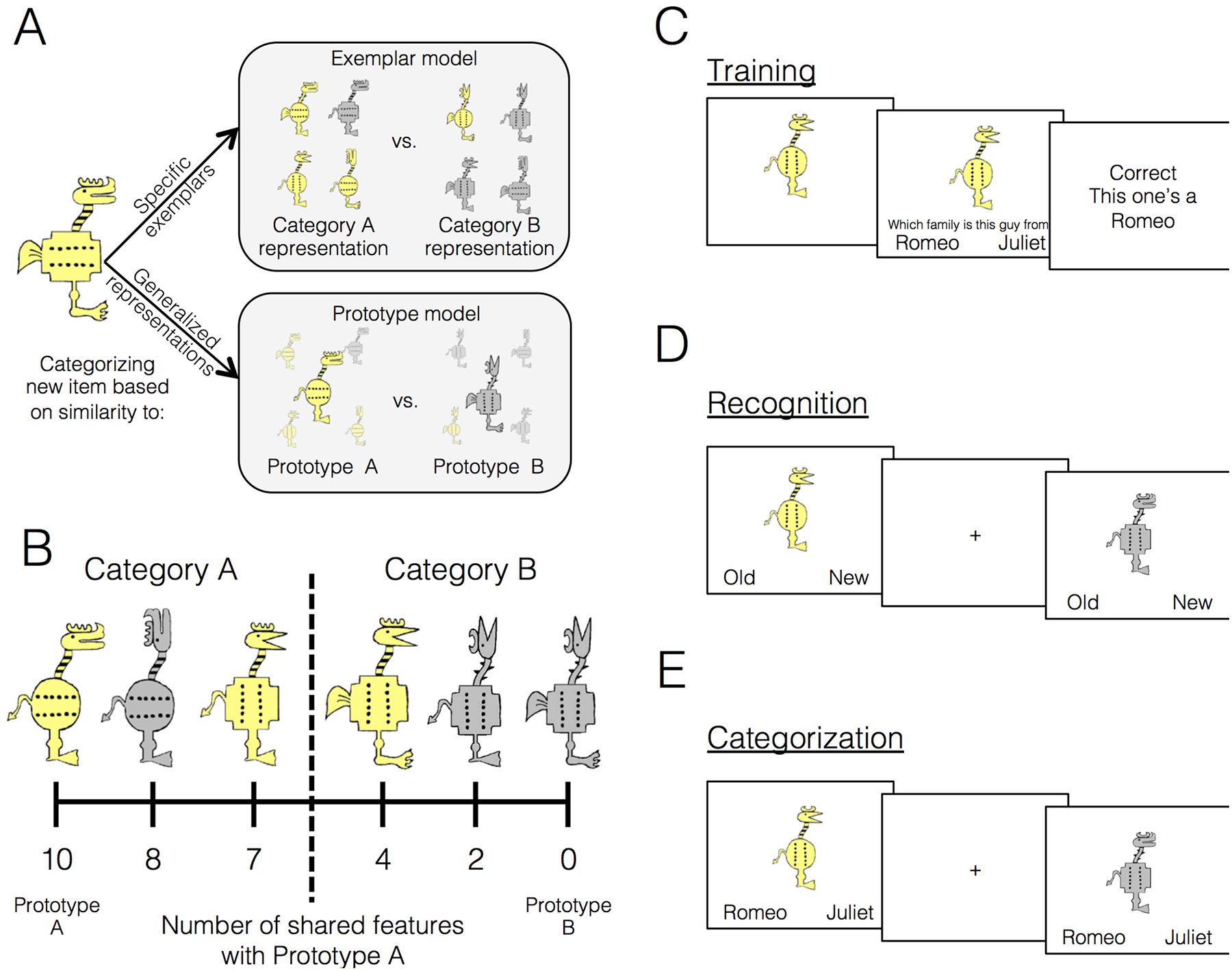Figure 1.

Category-learning task. A. Category representations and generalization to new items under the assumptions of the exemplar and prototype models. Exemplar: categories are represented as individual exemplars. New items are classified into the category with the most similar exemplars. Prototype: categories are represented by their central tendencies (prototypes). New items are classified into the category with the most similar prototype. B. Example stimuli. The leftmost stimulus is the prototype of category A and the rightmost stimulus is the prototype of category B, which shares no features with prototype A. Members of category A share more features with prototype A than prototype B and vice versa for members of category B. Stimulus coherence is computed by dividing the number of prototypical features by the total features (10) to compute the percentage of typical features. C. Participants underwent feedback-based training with one of six possible training sets that varied the size of the training set and the coherence of the examples. D. In recognition, participants were shown training (old) items and never seen category members and made old/new judgments. E. In categorization, participants were shown training (old) items and never seen category members and made categorization judgments without feedback.
